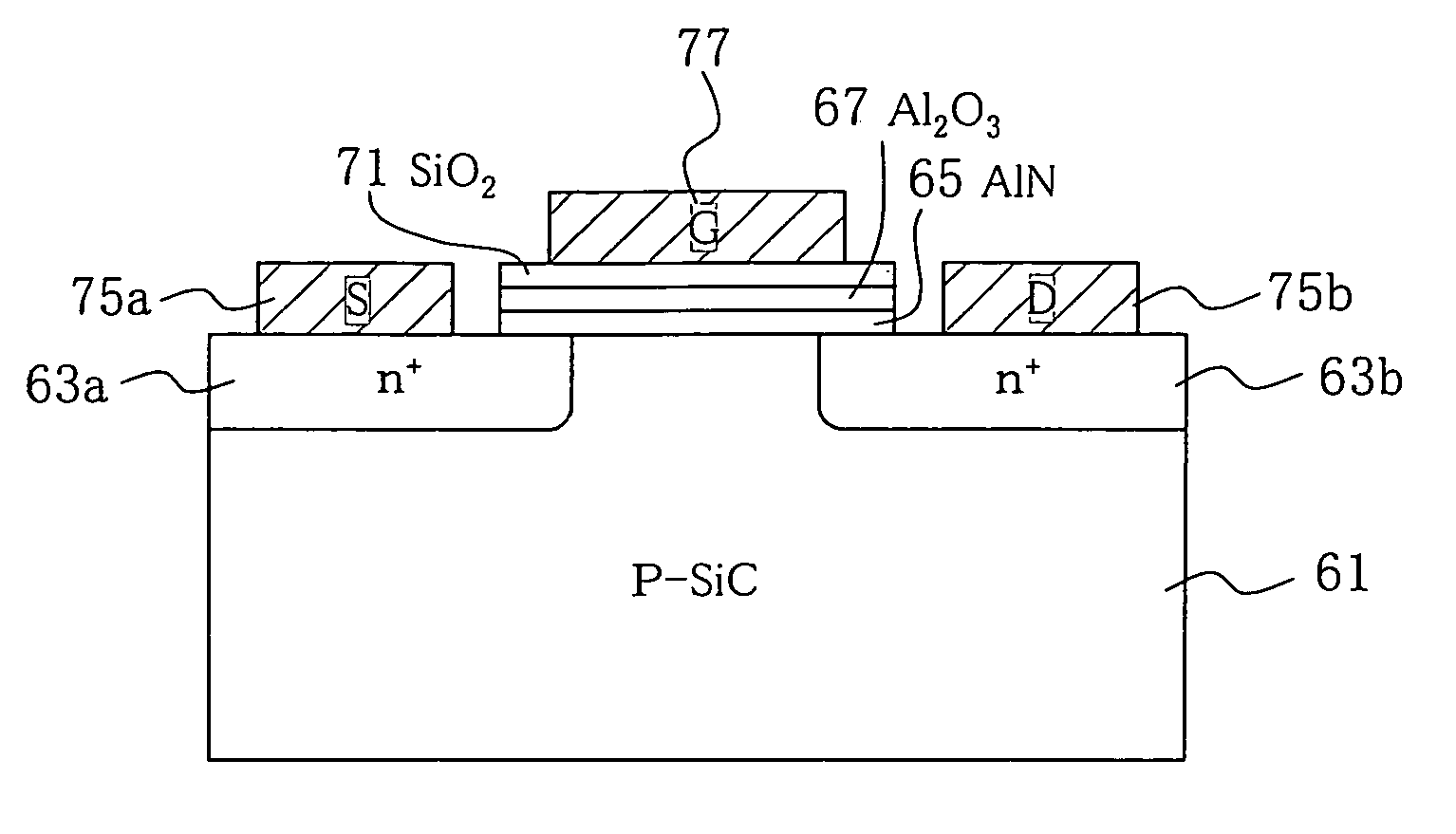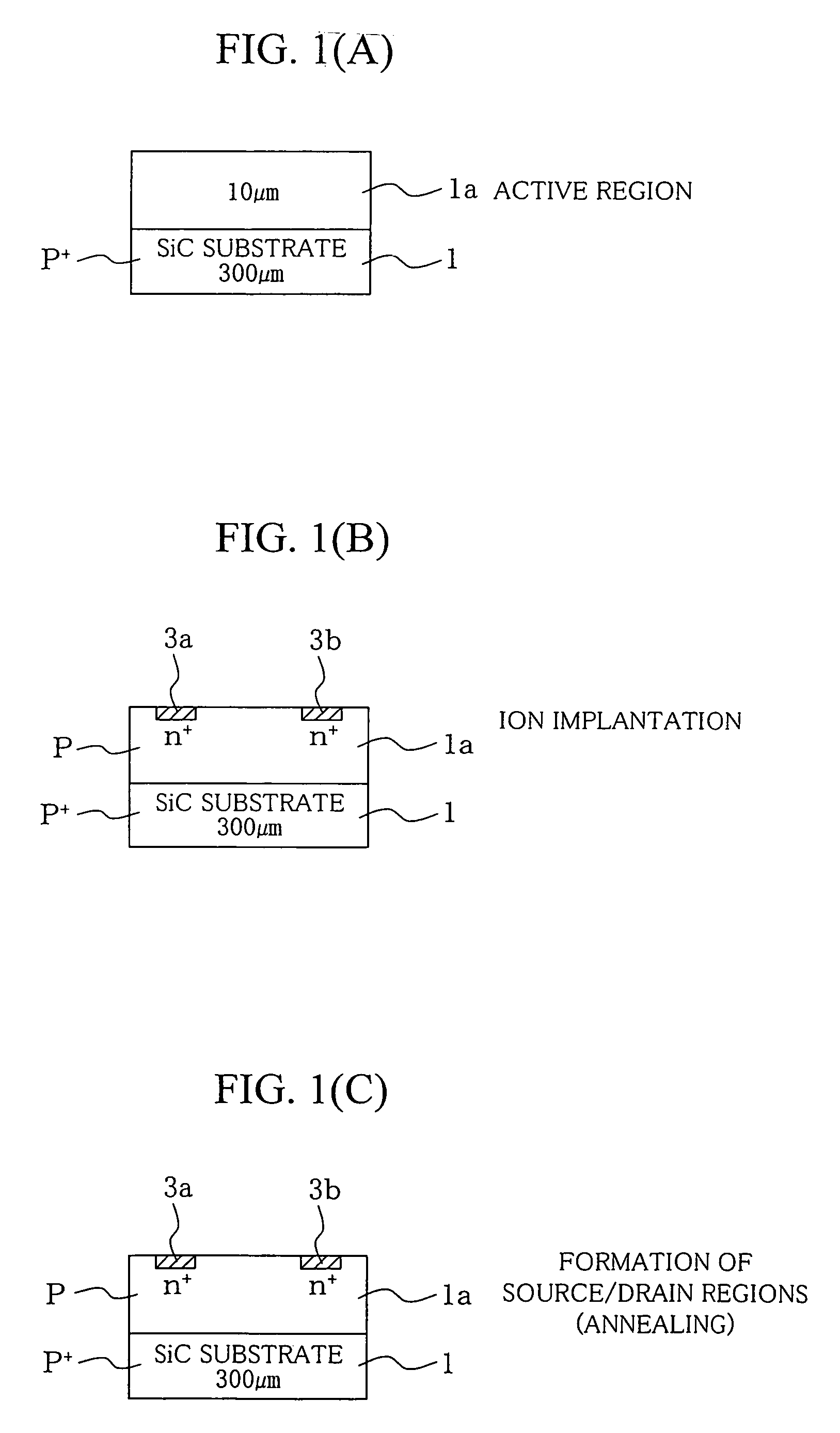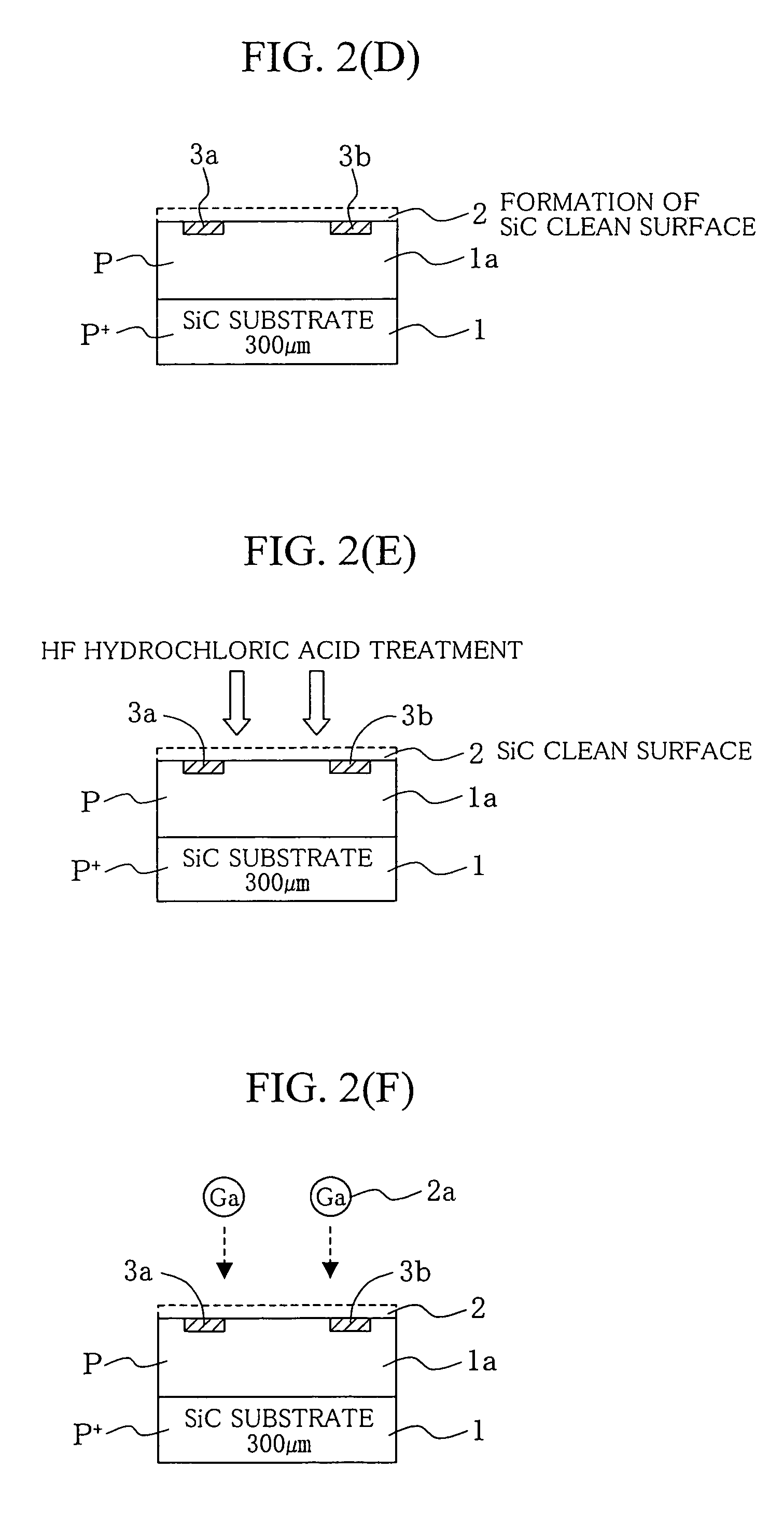Field effect transistor and method for manufacturing same
a field effect transistor and field effect technology, applied in the field of misfet, can solve the problems of increasing channel resistance, difficult to realize high-performance devices, and difficult to grow high-quality aln crystals on the surface of sic, and achieve the effect of leakage curren
- Summary
- Abstract
- Description
- Claims
- Application Information
AI Technical Summary
Benefits of technology
Problems solved by technology
Method used
Image
Examples
second embodiment
[0035]In the following, a MISFET according to the invention is described with reference to the drawings.
[0036]In the present embodiment, Al2O3 is used as the insulator on the gate electrode side. As shown in FIG. 5(A), the MISFET of the present embodiment includes source and drain regions 43a and 43b in a p-type SiC substrate 41 that are heavily doped with n-type impurities, layered structures 45 and 51 of AlN layer / Al2O3 layer formed between the source region 43a and the drain region 43b on the SiC substrate 1, and a gate electrode 55 formed on the layered structures 45 and 51. When the affinity with the AlN layer 45 is taken into consideration, it is preferable to use an insulator that contains Al as a component. In addition, Al2O3 is suitable for application in MISFETs because of its large bandgap, high insulation property, and large dielectric constant. FIG. 5(B) shows schematically the energy band structure of the SiC MISFET shown in FIG. 5(A) in the direction from the gate ele...
first embodiment
[0038]Thus, in accordance with the SiC-based MISFET of the present embodiment, the same effects as those obtained in the SiC-based MISFET can be obtained and, in addition, the manufacturing process can be simplified.
third embodiment
[0039]In the following, a SiC-based MISFET according to the invention is described with reference to the drawings. FIG. 7 shows a cross section of an example of the SiC-based MISFET of the present embodiment. As shown in FIG. 7, the SiC-based MISFET of the embodiment includes a source region 23a and a drain region 23b formed in a p-SiC substrate 21, a source electrode 31a and a drain electrode 31b formed on the source region and the drain region, respectively, a BxAl1-x-yGayN layer (x35. When a BAlGaN mixed crystal is used, the in-plane lattice constant can be substantially completely matched with SiC. If the lattice constants can be matched, distortion in the interface can be reduced and the development of misfit dislocation therein can be suppressed, which is preferable. If the mixed-crystal composition increases, the so-called alloy scattering, which is based on the fluctuation in the microscopic composition of the mixed crystal, increases, which would lead to a reduction of the ...
PUM
 Login to View More
Login to View More Abstract
Description
Claims
Application Information
 Login to View More
Login to View More - R&D
- Intellectual Property
- Life Sciences
- Materials
- Tech Scout
- Unparalleled Data Quality
- Higher Quality Content
- 60% Fewer Hallucinations
Browse by: Latest US Patents, China's latest patents, Technical Efficacy Thesaurus, Application Domain, Technology Topic, Popular Technical Reports.
© 2025 PatSnap. All rights reserved.Legal|Privacy policy|Modern Slavery Act Transparency Statement|Sitemap|About US| Contact US: help@patsnap.com



